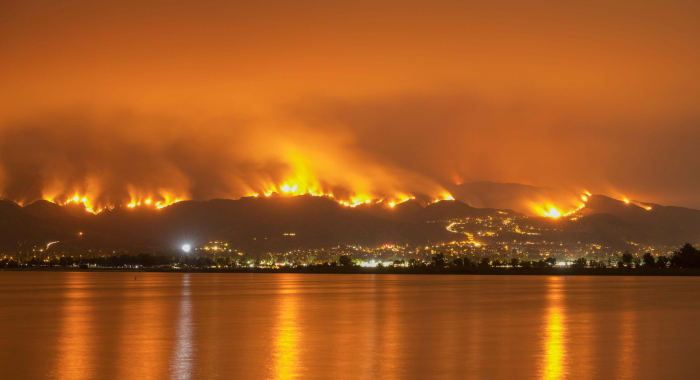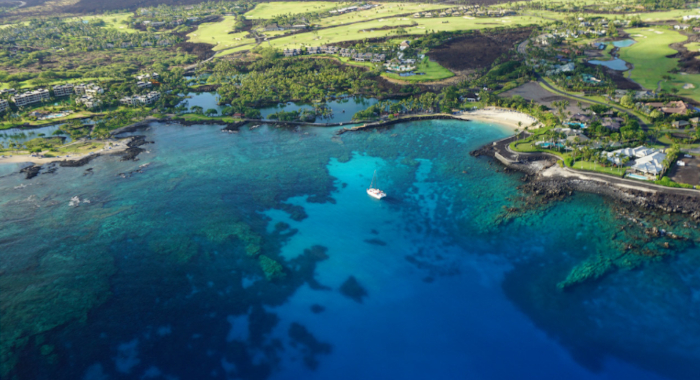Technology is enabling conservation scientists to collect and analyze data with an efficiency unimagined just decades ago. Satellite and drone-based remote sensing allow rapid mapping and monitoring of environmental conditions; networked sensors such as camera traps and flow meters provide real-time data about the health and potential threats to important resources.
Data are fundamental to making science-based conservation decisions. By modernizing environmental data capture and analysis and streamlining the delivery of usable information to decision makers, we can unlock new opportunities for transformative change in resource management.
The Conservancy’s team of designers, engineers, and data scientists are continually applying new applications of technology to increase the pace and scale of conservation in California – and beyond.


TJ Coonan, V Bakker, B Hudgens, CL Boser, DK Garcelon, SA Morrison
The island fox is a rare carnivore existing on only six California Channel Islands. In the late 1990’s, due to new and excessive golden eagle predation, it was threatened with extinction on the…Jeanne M. Robertson, Kathryn M. Langin, T. Scott Sillett, Scott A. Morrison, Cameron K. Ghalambor, W. Chris Funk
Conservation of biodiversity can be complicated when there are many priority taxa and tradeoffs in management need to be made. This can be especially challenging on islands, where populations with…Mario B. Pesendorfer, Kathryn M. Langin, Brian Cohen, Zachary Principe, Scott A. Morrison, T. Scott Sillett
Acorns are an important food resource for many species that occupy oak habitats. Patterns of acorn abundance across time and space, however, are often difficult to characterize. This paper describes…CL Boser, C Cory, KR Faulkner, JM Randall, JJ Knapp, SA Morrison
Biosecurity is the prevention of damaging non-native species’ arrival and establishment to new areas, for the protection of native plants and animals. This paper discusses the first iterations…Michelle D Staudinger, Shawn L Carter, Molly S Cross, Natalie S Dubois, J Emmett Duffy, Carolyn Enquist, Roger Griffis, Jessica J Hellmann, Joshua J Lawler, John O'Leary, Scott A Morrison, Lesley Sneddon, Bruce A Stein, Laura M Thompson, Woody Turner
This paper synthesizes research pertaining to climate change impacts on biodiversity, reviewed by the biodiversity technical working group of the 2014 National Climate Assessment. The paper focuses on…Golet G.H., D.L. Brown, M. Carlson, T. Gardali, A. Henderson, K.D. Holl, C.A. Howell, M. Holyoak, J. Hunt, G.M. Kondolf, E.W. Larsen, R.A. Luster, C. McClain, C. Nelson, S. Paine, W. Rainey, Z. Rubin, F. Shilling, J.G. Silveira, H. Swagerty, N.M. Williams, D.M. Wood
Large-scale ecosystem restoration projects seldom undergo comprehensive evaluation to determine project effectiveness. Consequently, there are missed opportunities for learning and strategy…J Yoon, TS Sillett, SA Morrison, CK Ghalambor
When members of a single species display very different behavioral patterns it can present a helpful model for ecological study. This paper examines two breeding populations of a songbird species: one…Principe, Z., J.B. MacKenzie, B. Cohen, J.M. Randall, W. Tippets, T. Smith, S.A. Morrison
Coastal southern California has long been the focus of regional conservation planning efforts. Decades ago – and prior to today’s heightened awareness of the magnitude of the likely…Joshua H. Viers, John N. Williams, Kimberly A. Nicholas, Olga Barbosa, Inge Kotzé, Liz Spence, Leanne B. Webb, Adina Merenlender, Mark Reynolds
As an essential component of food security, agricultural landscapes must play a role in conservation efforts because they occupy large areas of land, are adjacent to critical habitat, and both depend…Luke Caldwell, Victoria J. Bakker, T. Scott Sillett, Michelle A. Desrosiers, Scott A. Morrison, Lisa M. Angeloni
The Island Scrub-Jay is the only island restricted bird species in the continental U.S. This study presents findings of a comprehensive breeding ecology study, aimed at elucidating demographic…Butterfield, H.S., D. Cameron, E. Brand, M. Webb, E. Forsburg, M. Kramer, E. O’Donoghue, L. Crane
The Western San Joaquin Valley Least Conflict Solar Energy Assessment characterizes the land use constraints and opportunities associated with siting solar energy facilities in the Western San Joaquin…Butterfield, H.S., D. Cameron, E. Brand, M. Webb, E. Forsburg, M. Kramer, E. O’Donoghue, L. Crane
A Conservancy analysis of the western Mojave Desert identified where human activities had degraded the conservation value of lands making them potentially low impact locations for development of solar…Gennet, S., J. Howard, J. Langholz, K. Andrews, M.D. Reynolds, S.A. Morrison
This paper discusses the 2006 outbreak of toxic foodborne E. coli and its impact on wildlife. The authors explain how farming practices for food safety that target wildlife can damage ecosystems but…Gleason M, Feller EM, Merrifield M, Copps S, Fujita R, Bell M, Rienecke S, Cook C
On the Central Coast of California, The Nature Conservancy, Environmental Defense Fund, local fishers and local, state, and federal authorities worked collaboratively to protect large areas of the…Jeanette Howard, Kirk Klausmeyer, Kurt Fesenmyer
Californians face profound decisions regarding the management of their state’s increasingly limited water supply. Critical for decision-making is information about the plants and animals that…Darci Palmquist, Mary Gleason, Matt Merrifield